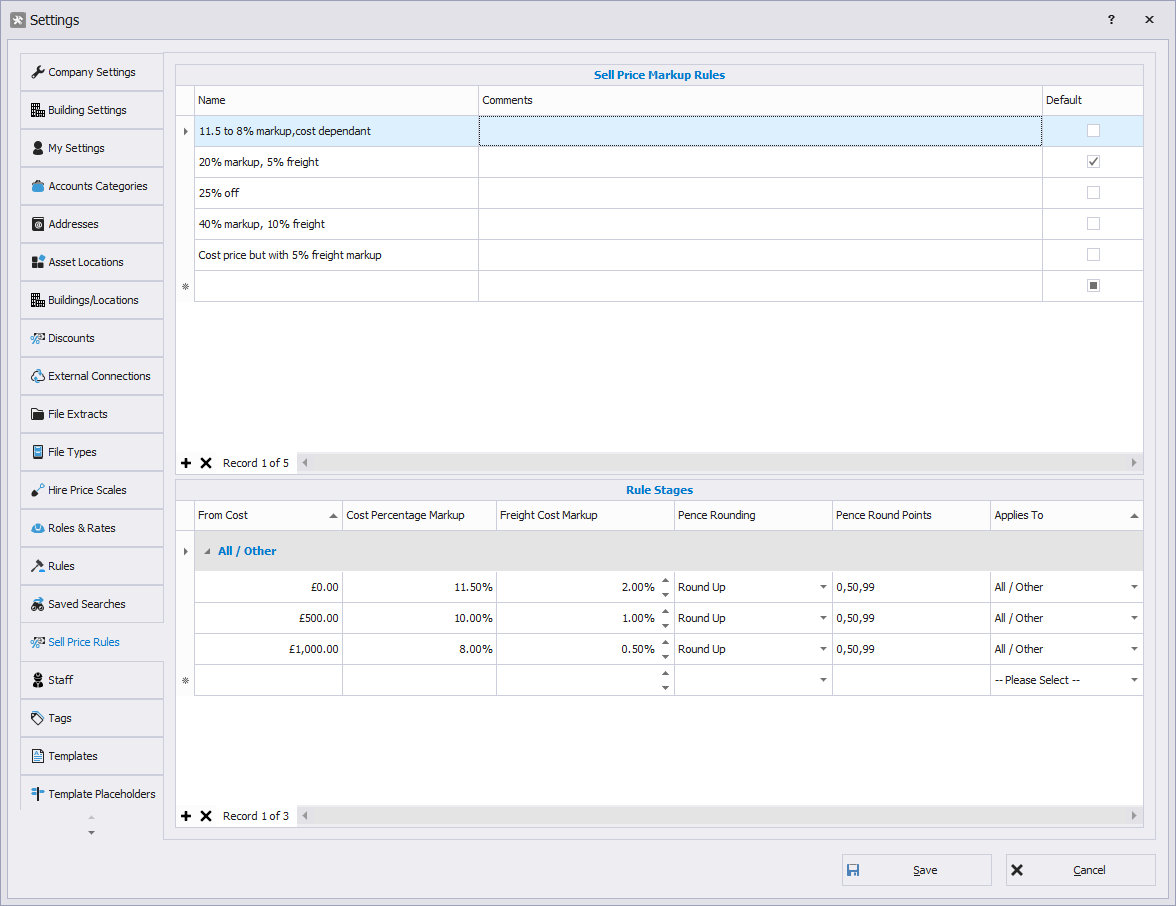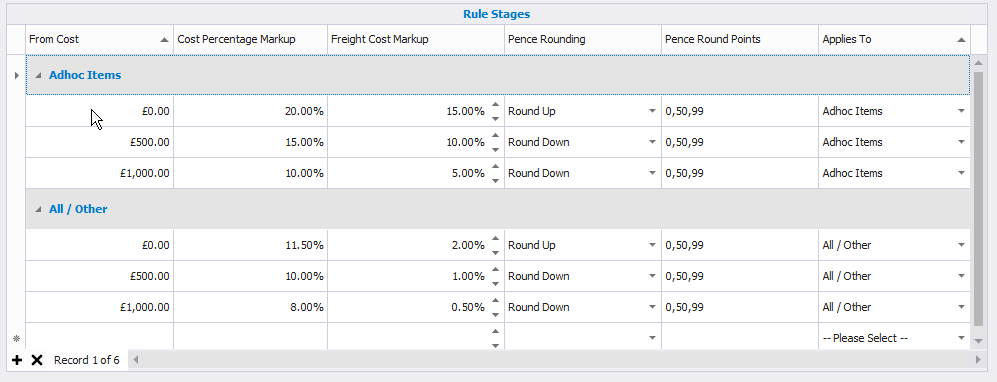Help Topics
- EaseSuite
- Frequently Asked Questions / Troubleshooting
- General Application Features
- Stock Control and Replenishment
- Accounts Package Integration
- Quick Start Guides
- Mobile Guides
- Word Templates & Print Outs
- Concepts
- Hardware
- Workflow Case Studies
- Terminology
- Submitting Help Requests
- Feature Requests
- Web Shop Preparation Guide
Sell Price Rules (Markup Rules)
In EaseSuite, we have a concept of Sell Price Rules, essentially these can dictate what is added to the cost price to determine the sell price.
For example at its simplest, buy at £20.00, add on 20% to get a marked up sell price, and so sell at £24.00 (20 * 1.20) to make a £4 profit on each item.
Each product can have a Sell Price Rule associated, and that in turn with averaged out/easy to update costing, this can provide automatic sell price updates as costs move. Sell Price Rules can also go a bit deeper and also be price scaled as described in the following.
In Settings > General > Sell Price Rules, you'll notice two lists. The one at the top indicates a list of Sell Price Rules, and the list underneath shows information relating to the currently selected row in the top list.

1. Adding/editing a Sell Price Rule
At its simplest, select the + button on the top list, then specify a name, comments (perhaps workings), and you can choose to set as default (the one that new products are given by default when added).
To edit you can simply update information in the grid.
As soon as you add a record, you'll get a single record below with From Cost £0. You can type the markups you want in this row (Cost will be added to cost, Freight added to any freight to give you a sell price as described in Products). With just a single row, this markup will apply to all costs from £0 upwards.
There is a pence rounding feature should you wish to keep the pence portion nice after a markup has been applied. For example, if our cost was £20.39 and we add 20% markup to get £24.47, we might want to round that up or down so the decimal portion is a bit nicer, e.g. £24.50 or maybe down to £23.99. Using a combination of Pence Rounding (None - does nothing, Round Up or Round Down) and the Pence Round Points, the system will lean towards rounding the value up or down to one of those points. You can have as many or as few points as you want. If you just had 99 for example, the system would round up or down to the nearest 99 (e.g. £24.99 up or £23.99 down for previous example of £24.47), and similarly if you just like whole numbers you can use 00.
2. Markup % Based on Cost
The table above with the 3 rows underneath basically does the following:
| Cost Price Range | Apply Markup |
|---|---|
| £0 to £500 (excluding £500, so up to and including £499.99) | Add 11.5% on cost, 2% on freight cost to achieve sell price |
| £500 to £1000 (to £999.99) | Add 10% on cost, 1% on freight cost to achieve sell price |
| £1000 and above | Add 8% on cost, 0.5% on freight cost to achieve sell price |
As you can see, you can potentially offer staggered reductions based on the cost value of the item within a single Sell Price Rule. From Cost can be anything you want and you can easily add more in later, which will automatically sort the table and create additional ranges. For example you could introduce a new row with From Cost £250 and put in percentages, then the system will automatically have the ranges £0 to £250, £250 to £500 (new row), £500 to £1000, £1000+ for example, so this is very flexible. Often the higher the cost, the less percentage markup you want to hit the customer with.
2.1 Applies To
By default this is All / Other, but you can have another option, Adhoc Items, and effectively double up ranges.
Some customers want to define a higher markup for what we call Adhoc items, essentially non-stock items that are ordered especially for a customer. These might get higher markup because there is a bit more effort in sourcing them compared to normal stock items.
The table below shows how you can define two different groups of rules, and depending on what product type is in play and how different markup rates can apply. If it's an ad-hoc item, it will pick one of the top rows. If anything else such as stock (or a fall-back if it can't find in the ad-hoc table), it will go onto All / Other to find its markup percentages. When converting a Purchase Order Reservation to a Sales Order, or editing a Product, this table will be used to get the appropriate value depending on the type of product.
Also note below how you might want to Round Up for lower value items, but Round Down in higher cost brackets.
